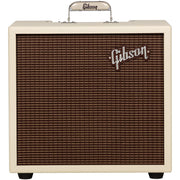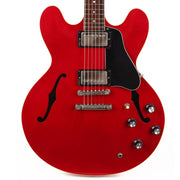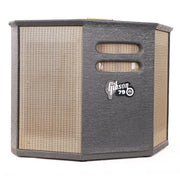How Gibson Custom Shop Builds Signature and Collector’s Choice Guitars
Original article on Gibson.com by Ted Drozdowski 04.27.2012
For many players and collectors the Gibson Custom Shop in Nashville, Tennessee, is a six-string Mecca, a nearly holy place where great instruments with the aura of history are created and re-created. And the Custom Shop’s most valued guitars are its Signature models and Collector’s Choice issues.
In recent years, the Signature line has yielded exact recreations ofJeff Beck’s 1954 Oxblood Les Paul, Jimmy Page’s Number Two,Slash’s Les Paul, Peter Frampton’s Les Paul Custom and many more highly coveted instruments.
More recently, the Collector’s Choice Series – which recreates guitars from both star players and collectors – has built its first issues. Collector’s Choice #1 is the 1959 Les Paul Standard that was owned by Peter Green and Gary Moore, nicknamed “the Holy Grail.” Likewise, Collector’s Choice #2 is also a ’59 Standard, dubbed “Goldie” by the collector who owns it. The brand-new Collector’s Choice #3 is a ’60 burst with a Bigbsy and ’59 neck profile, owned by Joe Bonamassa. These hand-built beauties are among the finest guitars made today.
The creation of both Signature model and Collector’s Choice guitars is under the direction of the Custom Shop’s Historic Program Manager, Edwin Wilson. “I started playing when I was 12,” Wilson said, “and started working on guitars when I was 13. I enjoyed building and working on the guitars more than playing, and today it’s become an obsession.”
Part of that obsession has been cultivating relationships with collectors and artists for 25 years. “I have a network that I can draw on to find these guitars,” Wilson explained. “A Signature model guitar is pretty self-explanatory. It’s an instrument owned and played by an artist. The Collector’s Choice series is literally that – their choice. They present us with a guitar that is interesting and important to them, and typically these are instruments from the ’50s and ’60s, so they’re naturally of major importance. And this is where the process begins.
“Once we have decided what guitar we are going to focus on, then arrangements are made to get the instrument into our possession so we can start the development process. We try to accommodate the owners and the guitars in any way we can. If it means flying to another location or country even, in order to get our information together, that is what we do. Sometimes we are fortunate enough to have the guitar brought into our building, this way we can use our equipment in house instead of traveling to the guitar with our equipment, but the rule is ‘Whatever it takes to make it right.’
“At this point I have a ‘partner in crime’ that I work with,” said Wilson. “He is truly a Master Luthier in every aspect, his name is Matthew Klein and with 40 years of guitar building experience, there is not too much that presents a problem for him. Matthew and I have known each other for over 31 years and worked together for 26 of those years and that is what makes this part of the process work so smoothly. Typically Matthew or I will get a scan of the instrument and then Matthew will take the raw data, clean it up and use this to generate machine code for manufacturing of the guitars, generate fixtures for production of the instruments. Once this part is done then we will discuss any nuances with the scan to figure out what are important features to reproduce, then Matthew will start the prototype neck and body.”
The first step in the process is getting the guitars to the second-floor engineering department of the Custom Shop’s building off Nashville’s Elm Hill Pike. “Sometimes the guitar is shipped here,” Wilson said. “Sometimes collectors bring the guitars here. We’ve literally bought first class tickets to fly guitars here.”
After their arrival the guitars are documented with photos, notes and measurements. “We’re looking for authenticity,” Wilson said. “There’s different nuances to every guitar Gibson’s ever made. We’re looking for what it is exactly that makes each one unique. Those qualities are the real selling point. There has to be uniqueness on some level. Collector’s Choice #2 had amazingly wide flame on it because of how the top was cut, and that made that guitar unique.
“In the case of the Peter Green/Gary Moore guitar, Collector’s Choice #1, we went to the collector’s location in Florida and copied it there. It’s got a particularly unique top – the same kind of figure that’s on Billy Gibbons’ guitar – and the pickups are out of phase. That gives it a unique look and sound.”
Wilson and his staff already know the materials and electronics in every guitar the company has made over its history, so during intake they document aging and checking patterns, color fading, any customizations and unique wear patterns that need to be reproduced. “We make templates of wear patterns so we can accurately recreate the look of the guitars,” he explained.
The date an instrument was built also has to be verified. Most often, serial numbers tell the story, but in some cases, features and materials specific to certain periods – such as tapered necks, speed dial knobs, pickups and tuners – are used.
Next comes scanning. Guitars are placed on a table in the engineering department, held in place by felt-covered blocks and custom-cut chucks.
A scanner with a pointy-tipped, nylon data-measuring stylus that’s made in-house is passed over every bit of the guitar’s surface to create a computer map of its contours.
In the case of Billy Gibbons’ 1959 “Pearly Gates” Les Paul Standard, this process revealed a sharper-than-usual reverse curve to the instrument’s top than is customary for the model year, which precluded using standard reissue bodies for the signature edition. Instead, each “Miss Pearly” has its own body custom cut.
Using all that data, the next step is creating test pieces of the guitar in Wilson’s shop area. Usually that involves making an exact copy of the neck and other parts that may be unique to that instrument. “Starting with the Billy Gibbons guitar, we began a new procedure,” Wilson explained. “We now create an entire unfinished prototype of the guitar and send it to the artist or collector we got the original from, so they can play it and let us know if it looks and feels correct.”
Pains are taken on every model to ensure authenticity. “When we shape the neck, we shape the neck the exact same way they did in the 1950s or ’60s,” Wilson continued.
On the day we visited the Custom Shop, Wilson had Kirk Hammett’s 1979 Gibson Flying V on his workbench in the aging room – also known as “Edwin’s Room” – alongside a prototype that recreated the original’s wear marks and checks, and even boasted three strips of gaffer’s tape on its back, just like Hammett’s.
The Metallica guitarist’s axe arrived with a distinctive bridge made by out-of-business company Stars Guitar. Rather than compromise, Wilson and his team are outsourcing the bridge to a machine shop for exact reproduction.
“It’s a stand-out feature on this guitar,” he said. “When we recreate something, we try to the best of our ability to recreate every detail. Even checking lines and cracking lines in the finish – it’s all reproduced as closely as possible. We work on things that the consumer is interested in looking at. The checking pattern has to look the same as on the original. We make patterns of the wear on the edges. The general public would never see these details on the original guitar, but they’re looking for us to see everything for them.”
After prototype Signature and Collector’s Choice models are approved, the building process for each run of specific guitars moves out into the Custom Shop’s manufacturing area, which is kept at 45-percent humidity to create an ideal environment for maintaining the cured woods. Bodies of prototype guitars and their subsequent production models are carefully chosen from the stock of mahogany, which Wilson purchases.
“Typically vintage guitars are lighter, so we start with a block of wood with an average weight of about 9.2 pounds,” Wilson said. Carving and sanding deletes nearly three pounds from that raw block’s weight.
Then the guitar building begins. All of the woods used in making the bodies of guitars at the Gibson Custom Shop – mahogany, spruce, maple, and holly from Canada, the Pacific Northwest and the Northeast – is kept stacked on shelves and pallets just inside the shop, right behind the wall that separates ready-to-ship guitars and the factory floor. Programmable machines in the rough mill carve the necks and the bodies, including the routing necessary for electronics.
All jobs in the Custom Shop are highly specialized and require the expertise of staffers such as Richard Ickes. The dean of the wood shop with 36 years of service, Ickes came to Nashville with the company when it moved from Kalamazoo, Michigan, in 1985. “They had these same machines way back in the 1930s, and I learned on them,” said Ickes. “They were originally steam powered, but were converted to electricity before I came on in 1973. It takes a while to get the hang of them, but it comes. You learn how to change the fixtures that get fitted in place on the table of the machine. And you make all the adjustments by hand to get the correct radiuses and curves and thicknesses of the tops, and then guide the carving.”
Next to the wood shop are various stations of the neck making process. After the necks are rough cut they are smoothed and sanded.
Two small holes are drilled into their faces to anchor the fretboards, and a channel running the length of the neck is made for the truss rod. At the same time, the maple tops for Les Pauls like the classics in the Collector’s Choice series are glued in place and bound while they set. Binding gets especially complex for semi-hollow and hollowbody models like ES-335s and L-5s, since they also have interior supports that need to set in place.
Fretboard woods arrive at Gibson as blanks. They are trimmed to fit specific models and fitted with fret wire, and then seated and glued to the necks. The glued neck and fretboards are put into a press to be glued. The truss rods are placed in the neck channels, which are covered with a thin strip of maple.
Every bit of this process is done by hand. And every guitar player knows how important a guitar’s neck is to its overall playability, so there’s no room for carelessness or corner cutting. The necks and fretboards are cleared of excess glue, rough fret edges, sawdust, and any other imperfections at various points in the manufacturing process before – and after – the necks are seated and set into the bodies.
Guitars and necks that require binding, which lends many classic models including Les Pauls extra beauty and style, make a stop for one more procedure before that binding is applied. The “rabbet” channels that accommodate the binding are cut along the edges of the body and neck where the decorative strips will be applied. Some guitars require binding on the inner edges of their f-holes, as well.
Sanding is the next important step, with the edges of necks and the contours of bodies hand-smoothed on a giant sanding belt. There are no computers involved. The Custom Shop’s professional sanders must make constant judgment calls about the look and feel of the guitars taking shape during this process. Next to the sanding station another computer-controlled saw cuts out pickguards.
At this point, the guitar’s body and neck are ready to unite. Neck fitting is extremely hands on.
Sandpaper and wood chisels are the fitter’s tools, but before that begins the fitting department crew examines the quality of what’s been done so far – every aspect of neck, fretboard, binding and body work. Ultimately, however, this is where neck tenons – typically extra long in keeping with vintage designs of classic Gibsons – are fitted into body cavities and, once perfectly snugged, glued in place.
“Neck Fit” is also where the transponders that are standard equipment for every Custom Shop guitar are inserted into a tiny hole drilled in the neck tenons, which makes removal virtually impossible after the necks and bodies are glued together. Each transponder is about half the size of a typical oblong headache pill and has a distinct number. They allow guitars to be tracked during the manufacturing process with greater precision. More important to musicians and collectors, the transponders can be used to foil counterfeiters and thieves. If somebody’s trying to sell a guitar, it can be scanned to see if it belongs to another owner, is a genuine Gibson, or is a vintage guitar or a reproduction.
From there the guitars move along to fret inspection and filing, where the fretboard gets yet another thorough exam, cleaning, and tweaking. Next to the fret filing department stands the Custom Shop’s twin Plek machines. A hallmark of every guitar produced here is that it is adjusted and set – leveled and dressed – for maximum playability by the machines, which have a greater degree of accuracy than any human. They are remarkably self-contained: glass boxes with armatures and other mechanisms to run the cutting tools and measuring devices over the guitars. Every guitar that leaves the Custom Shop goes through this process.
The next major stop for the Collector’s Choice and Signature guitars is the paint room, where the bodies are sprayed – binding already in place – and air-dried on conveyors. Every guitar gets multiple coats of paint. Some, like ’bursts or other specialized shades, more than others. Typically in sunbursts there are four different colors: two in the necks and two in the body. Of course, each guitar is airbrushed by hand.
After the paint is applied and dries, it needs to be removed from the binding so those stylish bands once again become visible. This is done by Custom Shop employees wielding sharp edged blades that they draw over the binding to remove the excess lacquer and reveal the perfectly defined, straight-edged binding strips. The process is done seamlessly by eye, without any edging or alignment tools.
As the building process heads to conclusion, guitars get several thin coats of nitro-cellulose lacquer, readying them for a shine that’d put any sports car to shame. They move on to the buffing area. There, these optimum lacquer coatings are buffed to a rich finish by utilizing buffing wheels containing a red wax, then yellow wax and then finally a high gloss polish.
When Collector’s Choice and Signature models are aged, Wilson’s hand-picked staff uses wet sanding, staining, hand-rubbing and various scarring tools to get the details models such as the aged Randy Rhoads Les Paul Custom– missing toggle switch cover, yellowed original white finish, nicks below the bridge – correct.
The final assembly area is where all the electronics – wiring, volume and tone controls, the pickup selector switch, and Gibson’s own in-house wound and wax-potted pickups – are installed. And then, each guitar gets a final inspection, gets played, and has its transponder number entered in a logbook, before it is put in a case for shipping.
All that’s left for the guitar is to make some lucky player’s dreams come true.













